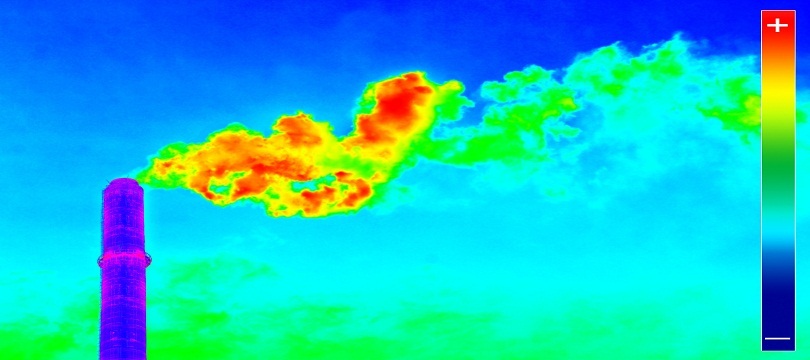
Reflected temperature compensation (RTC) is another parameter that has significant influence on accuracy of thermal imagery. Most commonly, if there no interfering factors in direct proximity of the measured object (e.g. radiation emitters), the reflected temperature is assumed to be equal to external temperature. In such case, a simple operation of traditional temperature measurement is sufficient – all one has to do is introduce the measured value to camera settings.
However, as industrial complexes represent groups of highly radiant objects it is hardly possible to provide accurate thermographic analysis without taking into account reflected temperature. One can use Lambert’s reflector for addressing this issue. It is a tool that disperses radiation evenly in all directions. The method is simple – aluminium foil is bent, flattened and then installed onto the measured object. Thermographic analysis of a coated object conducted at emissivity coefficient ε=1 provides accurate results.
RTC method is also highly recommended at outdoor measurements. Infrared radiation emitted by the cloudless sky reaches 50-60°C and sun rays may reach temperature of 5 500°C. Quite often these variations result in subzero temperatures registered by thermographic cameras.
Summary:
- Outdoor measurements should be performed early in the morning under clouded sky,
- If analysed object is surrounded by elements which may distort our measurement, such elements should be isolated in order to minimize their influence upon the object in question,
- RTC should be taken into consideration in all cases of thermographic analysis.


